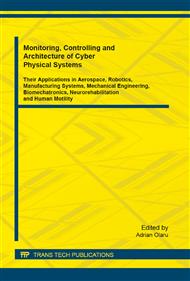[1]
R. A. Blais, M. D. Henry, S. R. Lilley, J. A. Pan, M. Grimes, Y. Y. Haimes, Risk-based methodology for assessing and managing the severity of a terrorist attack 2009 IEEE Systems and Information Engineering Design Symposium, SIEDS '09, art. no. 5166175: 171-176.
DOI: 10.1109/sieds.2009.5166175
Google Scholar
[2]
M. Bohner, A. Peterson, Dynamic Equations on Time Scales: An Introduction with Applications. Birkhäuser, Boston, (2001).
Google Scholar
[3]
M. Bohner, S. Sanyal, The Stochastic Dynamic Exponential and Geometric Brownian Motion on Isolated Time Scale. Community Mathematical Anals 2010; 8: 120-135.
Google Scholar
[4]
M. Csörgö, Random Walk and Brownian Local Times in Wiener Sheets. Periodica Mathematica Hungarica 61 (2010) 1-21.
DOI: 10.1007/s10998-010-3001-7
Google Scholar
[5]
A. F. Desmond, G. R. Chapman, Modelling Task Completion Data with Inverse Gaussian Mixtures. Applied Statistics 4(42) (1993) 603-613.
DOI: 10.2307/2986178
Google Scholar
[6]
K. A. Doksum, A. Hóyland, Models for Variable-Stress Accelerated Life Testing Experiments Based on Wiener Processes and the Inverse Gaussian Distribution. Technometrics 1(34)(1992) 74-82.
DOI: 10.2307/1269554
Google Scholar
[7]
A. Studzinski, K. Pietrucha-Urbanik, Risk Indicators of Water Network Operation. International Conference On Safety & Environment In Process & Power Industry, PT 1 Book Series: Chemical Engineering Transactions 26 (2012).
Google Scholar
[8]
T. J. Kelly, K. C. Hofacre, T. L. Derringer, K. B. Riggs, E. N. Koglin, Testing of safe buildings detection technologies and other homeland security technologies in EPA's Environmental Technology Verification (ETV) program, Proceedings of the Air and Waste Management Association's Annual Meeting and Exhibition 2004; 3449-3457.
Google Scholar
[9]
R. L. Kemp, Assessing the vulnerability of buildings, Journal of Applied Fire Science 14 (1) (2007) 53-61.
Google Scholar
[10]
J. Mueller, Assessing Measures Designed to Protect the Homeland, Policy Studies Journal 1(38) (2010) 1-21.
Google Scholar
[11]
K. Pietrucha-Urbanik, A. Studziński, Analysis of water pipe breakage in Krosno, Poland. Environmental Engineering IV, Pawłowski A., Dudzińska M. R. Pawłowski L. (eds), Taylor & Francis Group, London, 2013, 59-62.
Google Scholar
[12]
M. G. Stewart, Cost effectiveness of risk mitigation strategies for protection of buildings against terrorist attack. Journal of Performance of Constructed Facilities 2(22) (2008) 115-120.
DOI: 10.1061/(asce)0887-3828(2008)22:2(115)
Google Scholar
[13]
D. Valis, Z. Vintr, J. Malach, Selected aspects of physical structures vulnerability - state-of-the-art. Eksploatacja i Niezawodnosc - Maintenance and Reliability 14(3) (2012) 189-194.
Google Scholar
[14]
G. S. French, D. Gootzit, Defining and assessing vulnerability of infrastructure to terrorist attack, Vulnerability, Uncertainty, and Risk: Analysis, Modelling, and Management. Proceedings of the ICVRAM 2011 and ISUMA 2011 Conferences 2011; 782-789.
DOI: 10.1061/41170(400)95
Google Scholar
[15]
W. H. Zehrt Jr, P. F. Acosta, Analysis and design of structures to withstand terrorist attack, Proceedings of the Structures Congress and Exposition 2003; 585-592.
Google Scholar
[16]
Š. Čorňák, The assessment of brake fluids based on glycols and the toxicity. Transport Means - Proceedings of the International Conference, 1(1) (2012) 135-140.
Google Scholar
[17]
Š. Čorňák, Selected problems of drivers microclimate. In: Transport Means – Proceedings of the 13th International Conference. Kaunas: Kaunas University of Technology, (2009).
Google Scholar
[18]
D. Vališ, K. Pietrucha-Urbanik, Contribution to diffusion processes application in the area of critical infrastructure security assessment. In: Applied Mechanics and Materials. Zurich, Switzerland: Trans Tech Publications, 2013, pp.539-548.
DOI: 10.4028/www.scientific.net/amm.436.539
Google Scholar


